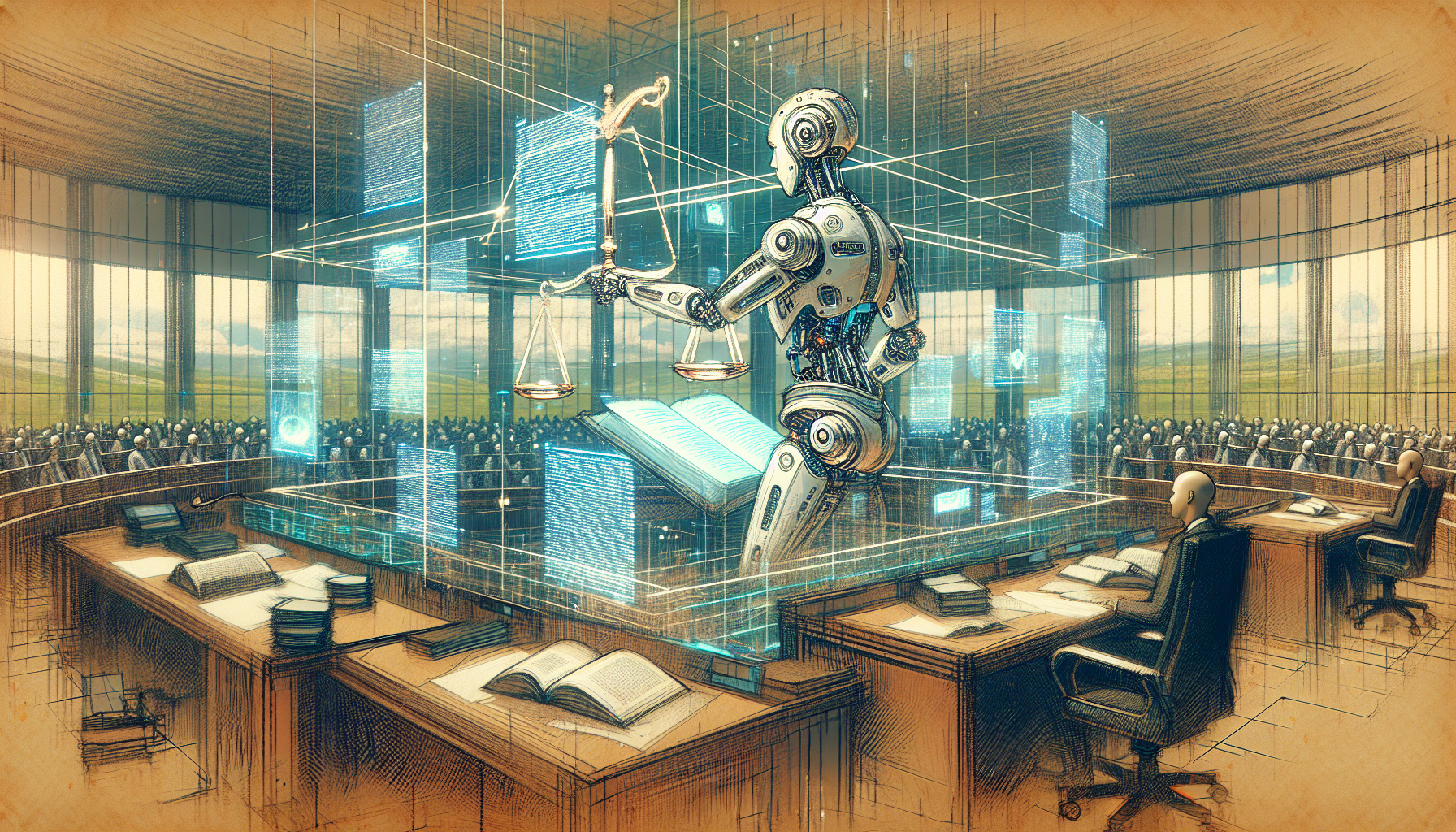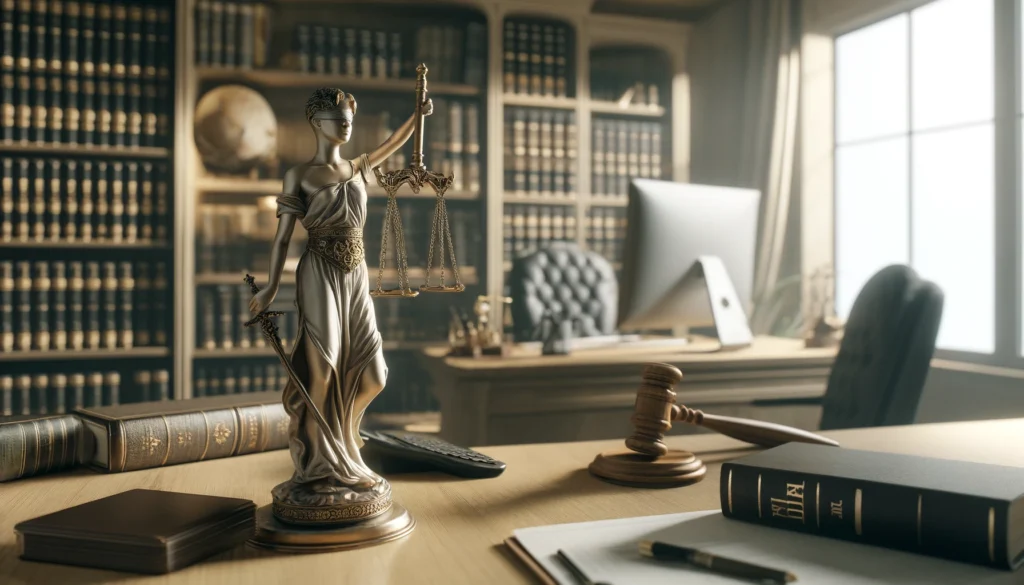
Setting the Stage: The Evolution and Role of AI in Legal Practices
The legal field has always been influential in leveraging technological advancements to streamline operations and improve accuracy. Artificial Intelligence (AI) technology has been a game-changer, particularly in the realm of legal analytics and document management. The advent of AI in legal practices allows professionals to process vast amounts of data with remarkable speed and precision.
Accurate crime scene analysis is pivotal in criminal defense, directly impacting the outcome of trials and the fate of defendants. Enter ChatGPT and other large language models (LLMs), which offer unparalleled capabilities in dissecting and understanding complex legal documents. These advanced AI tools promise to assist defense attorneys in breaking down crime scene analyses to unveil intricate details and inconsistencies that could be pivotal in court.
Smart Parsing: Breaking Down Crime Scene Reports Efficiently
Parsing through myriad crime scene reports and witness statements can be an overwhelming task for any legal team. ChatGPT simplifies this process by converting complex, verbose language into structured, actionable data.
- Techniques for converting complex language into structured data: Utilizing sophisticated NLP (Natural Language Processing) models, ChatGPT can transcribe convoluted reports into summarized segments, highlighting crucial points such as times, locations, and key observations.
- Nuanced prompts to extract key details: Craft prompts like, “Identify key suspect movements described in the police report dated [date]” or “Summarize witness descriptions of suspect clothing from [witness name]” to effortlessly pull vital information.
- Patterns and inconsistencies detection: With the ability to scan through multiple reports, ChatGPT can pinpoint discrepancies. Prompts like, “Highlight any contradictions in witness statements regarding the time of the incident” aid in recognizing conflicting testimonials or evidence.
Moving forward, this initial parsing sets the stage for recreating the crime scene more accurately, and comprehensively.
Also read:
Scene Recreation: Visualizing Crime Scenes with Precision
Accurate visualization of a crime scene is fundamental for any defense strategy. ChatGPT can significantly enhance this aspect by generating detailed and highly accurate descriptions.
- Generating detailed and accurate descriptions: Prompts like, “Describe the layout of the crime scene based on the police report dated [date]” can yield intricate recreations of the scene, factoring in placement of evidence and spatial relationships.
- Creative prompts for spatial relationships: By asking, “Detail the relative positions of the victim, the primary suspect, and key pieces of evidence at the scene”, professionals can visualize the scene’s dynamics more clearly.
- Collaboration with forensic experts: Cross-referencing ChatGPT-generated data with inputs from forensic analysts ensures that the information is both accurate and reliable.
This level of detail not only aids in developing a more substantial defense but also proves invaluable when constructing event timelines, the focus of our next section.
Also read:
Timeline Tactics: Constructing and Validating Event Sequences
Building an accurate timeline is essential for verifying alibis and understanding the sequence of events. ChatGPT assists in this endeavor by organizing evidence chronologically.
- Strategies for assembling chronological events: Collate data using prompts like, “Sequence events described in [document name] chronologically” to create a cohesive timeline of the crime.
- Cross-checking witness testimonies and alibis: Use prompts such as, “Match witness statements against reported times of occurrence” to verify the validity of alibis and identify discrepancies.
- Generating and validating alternative scenarios: Innovative prompts like, “Generate an alternative scenario considering the suspect was at location [X] at [Y] time”, help explore different event sequences and cross-verify them with known data.
This rigorous approach to timeline construction lays a robust foundation for drafting persuasive and precise legal documents, the focus of our next discussion.
Also read:
Legal Language Mastery: Drafting Persuasive and Precise Documents
The clarity and precision of legal documents can influence court proceedings significantly. ChatGPT can enhance this process, ensuring that all documents adhere to strict legal standards.
- Drafting motions and briefs: Prompts such as, “Draft a motion to suppress evidence on the grounds of [specific reason]”, can help create initial drafts that cover all necessary legal nuances.
- Ensuring clarity and accuracy: ChatGPT assists in refining complicated legal text into clearer, more accessible language, making it easier for all parties to understand the intended arguments.
- Avoiding pitfalls: With input from legal professionals, ChatGPT helps circumvent common mistakes, ensuring compliance with procedural norms and standards.
The ability to draft precise legal documents seamlessly ties into enhancing internal and client communications, our next area of focus.
Also read:
Collaboration Catalyst: Facilitating Communication with Legal Teams and Clients
Efficient communication within legal teams and with clients is crucial. ChatGPT can facilitate this by summarizing complex information and enhancing consultations.
- Streamlining internal communications: Prompts like, “Summarize key points from [document name] for internal review” ensure everyone is on the same page.
- Enhancing client updates: Provide clients with concise updates using prompts such as, “Summarize the current status of case [case name] for the client”, making consultations more productive.
The ethical use of AI in such roles is paramount, leading right into our next crucial discussion on ethical encounters.
Also read:
Ethical Encounters: Ensuring Integrity and Confidentiality
As AI becomes more integrated into legal practices, ethical considerations must be at the forefront.
- Addressing ethical considerations: It’s essential to ensure AI-generated content aligns with legal ethics, maintaining integrity in all aspects of analysis.
- Maintaining client confidentiality: Legal professionals must utilize secure AI systems, ensuring sensitive data remains protected.
- Ensuring reliability and credibility: Regular audits and cross-validation with human expertise are vital to maintaining the trustworthiness of AI-assisted analyses.
Adhering to these ethical guidelines lays down a stable groundwork for future AI advancements in the legal sector, which is our concluding focus.
Also read:
Future Pathways: Continuous Learning and Adaptation
AI and legal technologies are continuously evolving. For legal professionals, especially paralegals, embracing this change is vital.
- Keeping up with advancements: Regularly updating knowledge on the latest in AI technology ensures legal practices remain cutting-edge.
- Continuous learning and upskilling: Investing in training for paralegals on utilizing LLMs effectively promises a competitive advantage.
- Developing personalized workflows: Encouraging the development of tailored AI workflows enhances efficiency and accuracy in legal procedures.
By adhering to these strategies, legal professionals can seamlessly integrate AI into their work, thus revolutionizing crime scene analysis and enhancing overall defense strategies.


